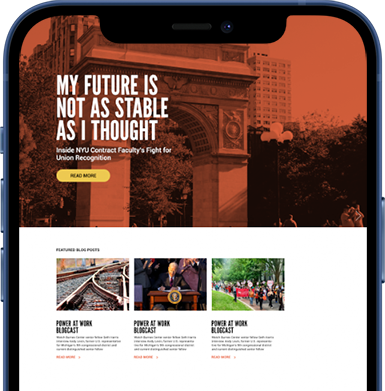The United Auto Workers strike against the Big 3 Automakers -- General Motors, Ford Motor Company, and Stellantis -- has been underway for more than one month. We have analyzed the The International Union, United Auto Workers (UAW) strike here on the Power at Work Blog several times, including two blogcasts with UAW front-line leaders, a discussion with labor experts, and clips of several television appearances by Burnes Center Senior Fellow Seth Harris (here, here, here and here). The start of the second month of this historic Stand Up Strike creates an opportunity for us to connect current issues in this bargaining relationship to previous negotiations.
During the 2008 recession, General Motors and Chrysler -- now Stellantis-- were near bankruptcy. They had no choice but to accept a bailout from the federal government. Ford, though not in the position of the other two companies, took part in the bailout, too. The following year, in 2009, the UAW joined the effort to save the companies by making concessions on wages, bonuses, job cuts, break times, overtime, and more. The union took a chance that its members’ sacrifice would pay off in the long run.
The companies were saved, but so far the UAW’s members did not get their concessions repaid. In September 2023, UAW President Shawn Fain made clear that this strike was all about righting that wrong: “Over the last week, the vice presidents and your national negotiators in my office have been working night and day to bargain a record contract to reflect the record profit we have produced for the Big 3… I’m still very hopeful that we can reach a deal that reflects the incredible sacrifices and contributions our members have made over the last decade.”
This CBS News video from December 2008 describes the promises the Big 3 automakers made to slash costs and put more fuel efficient vehicles on the market as quickly as they could in exchange for the $34 billion bailout engineered by former President George W. Bush.
So, how did UAW members feel about the bailout at the time? Our second video, with a brief interview of UAW Local 730’s president and one of its affected members, describes how UAW leaders and members felt backed into a corner by this “last-chance” vote.
There have been criticisms of the Stand Up Strike, especially because it comes so soon after a 40+ day walkout in 2019 at General Motors. However, as former president of UAW Local 2250 Glenn Kage said in our first interview in September, “[striking UAW members are] fired up. All you have to do is look at corporate profits, look at the CEO pay, and look across the line at your brother and sister and how they’re being treated on the line and you start getting the feeling that more should be done.”
UAW members generally have supported the hard line taken by UAW President Shawn Fain in negotiations. Given their profitability since the bailout 14 years ago, General Motors, Ford, and Stellantis can afford the increase in wages, benefits, and job security that Fain and his members are demanding. Fourteen years ago, union members gave up concessions, and now they are striking to get them back.
Subscribe to the Power At Work Blog.

